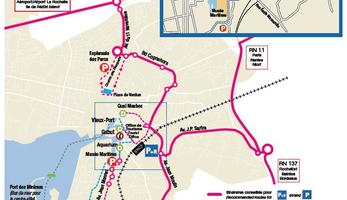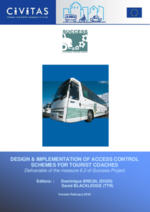Access controls for tourist coaches
Summary
New itineraries were identified as a way of tackling the pollution and disruption caused by the high number of tourist coaches crossing the centre of La Rochelle.
Implementing sustainable mobility
As a popular tourist destination, La Rochelle was faced with the problem of traffic congestion and pollution caused by tourist coaches crossing the city centre. The measure was implemented in order to improve signage and information for coach drivers, identify appropriate routes and optimise itineraries, and rationalise coach parking in the city.
Progress
As a first step, consultations were held with coach drivers in order to assess their needs and expectations with respect to driving and parking in La Rochelle.
In summer 2007, brochures were produced in English and French and distributed among coach drivers, tour operators and travel agencies. The brochures contained information on recommended routes, drop-off zones, parking possibilities and inermodal connections with public transport services. This information was also made available on the website of La Rochelle’s tourist office.
Coach drivers were also provided with global positioning system references for the recommended routes and parking areas.
Outcomes
In 2005, 60.7 percent of surveyed coach drivers considered that a brochure with route and parking information would be useful to have before arriving in La Rochelle.
In 2008, after the brochure was produced, 92 percent of surveyed drivers considered the brochure to be useful.
All coach drivers welcomed the possibility to download global positioning system references.
Regarding reception facilities on entering the city, 80 percent of coach drivers considered them to be satisfactory.








